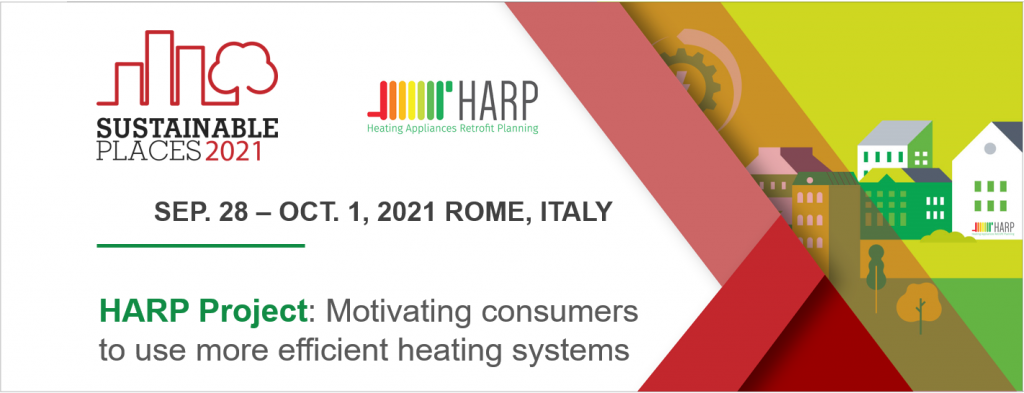"Heating Appliances Retrofit Planning" workshop
14:30 – 17:00, 30th September 2021, virtual

This virtual 180-minute workshop deeply explored The HARP project, “Heating Appliances Retrofit Planning”, which aims at raising consumers awareness to the opportunities underlying the planned replacement of their old and inefficient heating appliance. This is done by supporting the consumer in the identification of the energy (in)efficiency of their current heating equipment and the saving opportunities deriving from its replacement with a more energy efficient solution. The mission is to accelerate the European replacement rate for heating systems, actively contributing to the reduction of energy demand in buildings, in line with the energy efficiency targets set by the EU. HARP accompanies the consumer decision process, providing an impartial message, based on the energy label, and presenting the market solutions that respond to the consumer’s heating needs, providing a quantified approach for economic and non-economic benefits and bridging the gap with the market providers and available national incentives. Preceeding a fruitful debate between the expert panelists and the virtual audience, the following thought-provoking presentations were delivered:
Building VS heating stock – EURAC
The building stock and the installed stock of heating appliances has been analysed in France, Germany, Italy, Spain, Portugal and EU28 aggregated. The building stock has been analysed in terms of population, surface, typology, age of construction while the heating appliances have been distinguished into “domestic hot water and space heating” and “water heating” looking at the units installed, the thermal capacity and the final energy consumption considering all the most common technologies. The building stock and the heating appliances were combined to compose a matrix that matches the most common solutions to the building stock divided into Single-Family House and Multi-Family House.
Energy labelling methodologies for installed heating appliances – EURAC
Labelling methodologies has been developed for the “space heating” and “water heaters” appliances installed before the implementation of regulations 811/2013 and 813/2013. The methodology presents two levels of detail in the inputs required for the calculation: one for a common user that implements a simplified calculation and one for a professional user that implements a detailed calculation. The method for space heating appliances has been validated considering about 4600 models built between the 1972 and the 2019 while the method for water heaters appliances has been validated considering about 400 models built between the 1999 and the 2020.
The heating energy label for installed heating appliances, the market perspective – ASSOTERMICA
Based on 2019 EHI data we’ve more than 105 million space heaters installed in EU countries, 58% of which are still old and inefficient. Today the renovation rate is only 4% that means that we’re so far from achieving EU 2030 climate target. In this sense the main problem is not the availability of the different technologies but the awareness of the consumer about the opportunity to save energy and consequently to spend less. The aim of the heating energy label for installed heating appliances is to increase this value at 6% and to develop a market oriented to energy efficiency in a context of a multi-technology approach.
Opportunities when replacing old and inefficient heating systems – ENEA and OCU
Consumers’ awareness about the performance of their heating appliances is important to strengthen the public initiatives related to the national and EU targets of energy efficiency in existing buildings. This aspect will be discussed by taking the Italian system of fiscal deductions as example.
Adopting the energy label for existing heating appliances, the policy strategy – R2M IT
The HARP project is aiming at making the HARP methodology be adopted in as many countries as possible. To this end the factors (Political, Market, Society etc) which enable such adoption are being investigated and feedbacks from countries where a labelling scheme of existing heating appliances is in place will be collected.
